



 CONTENTS To trick a child or why I started baking with beans It started with a five-year-old who loved homemade bread but was suspicious of beans. That became the inspiration for this book. Olle, who is now six years old, has always been suspicious of vegetables, especially beans, peas, and lentils; sandwiches made with homemade bread on the other hand, now thats a different story. As editor of Buffet magazine, I remember we once featured a bread with chickpeas in the dough. I found the recipe, tried it, and surprisingly Olle happily munched away at his sandwich with no idea of what it was hiding. I got a taste for this style of baking and started to experiment.
CONTENTS To trick a child or why I started baking with beans It started with a five-year-old who loved homemade bread but was suspicious of beans. That became the inspiration for this book. Olle, who is now six years old, has always been suspicious of vegetables, especially beans, peas, and lentils; sandwiches made with homemade bread on the other hand, now thats a different story. As editor of Buffet magazine, I remember we once featured a bread with chickpeas in the dough. I found the recipe, tried it, and surprisingly Olle happily munched away at his sandwich with no idea of what it was hiding. I got a taste for this style of baking and started to experiment.
What about making crispbread from lentils? Or a pie crust from white beans and bread rolls from green peas? Once I had started to get an idea of the proportions between beans, liquid, and other ingredients, the results were surprisingly good. Its hard to say exactly what function is filled by beans, peas, and lentils; in some cases, they replace some of the flour, other times some of the liquid, fat, or eggs. The main thing is that the breads turn out really moist, cookies are crunchy, bars are crispy, and brownies are chocolatey and gooey. Heres a quick tip: serve first and explain later! I promise you that your guests wont be able to guess your secret ingredientsand that includes everyone from suspicious five-year-olds to skeptical old ladies and gentlemen.  PS However hard I try I struggle to embrace the word legumes. Beans, peas, and lentils sound so much tastier! Sometimes when I am writing generally about legumes I might just say beans, but remember to include peas and lentils too.
PS However hard I try I struggle to embrace the word legumes. Beans, peas, and lentils sound so much tastier! Sometimes when I am writing generally about legumes I might just say beans, but remember to include peas and lentils too.
It just gets tedious to keep repeating them all the time. You might come across a few legumes as I am trying to get used to the word, albeit reluctantly.  MORE BEANS IN YOUR BREAD Give your health a leg up by baking with beans. Smuggle some peas into your bread rolls, spice up your crispbread, and make bars with lentils. Beans in your dough make it moist and soaked lentils give cookies, granola, and piecrust a nice crunch.
MORE BEANS IN YOUR BREAD Give your health a leg up by baking with beans. Smuggle some peas into your bread rolls, spice up your crispbread, and make bars with lentils. Beans in your dough make it moist and soaked lentils give cookies, granola, and piecrust a nice crunch.  Why bake with beans? Bread is something most of us eat every day.
Why bake with beans? Bread is something most of us eat every day.
Theres breakfast of course, a piece of crispbread as a snack, some baguette with your lunchtime soup, and maybe a sandwich before going to bed. No one should be dissing bread; lots of types of whole meal flour, whole grains, seeds, and nuts are great. Its the white breads that are low in fiber that we need to be careful of as most contain fast-acting carbohydrates, which quickly raise the blood sugar. Its fine to eat white bread now and again, but if we eat a lot of bread, we can increase its health benefits by adding beans. Beans, peas, and lentils add protein and good fiber, but also many vitamins and minerals. There wont be a huge amount in one or two sandwiches, but still, every time you eat one you will get a boost.
In addition, you reduce the peak in blood sugar that the carbohydrates in bread can cause. This is because the fibers in the legumes are the first to be broken down when they come into contact with bacteria in the large intestines. Baking with beans is also a smart health choice in terms of protein. Protein in grains and protein in legumes look different but the body needs them all. When we eat them all together, they complement each other and are better for the body than if we eat them separately.  We need five handfuls, or around a pound of fruit and vegetables a day if you follow official guidelines.
We need five handfuls, or around a pound of fruit and vegetables a day if you follow official guidelines.
Most people eat a lot less than this. These handfuls also include beans, peas, and lentils and we are hardly consuming a lot of these eitheraround 12 grams a day is all we can manage when it comes to legumes. This is another reason why baking bread with beans is so good in my opinionalso cookies, pancakes, and pizza dough! Beans, peas, and lentils offer a lot of nutrition for little money. The best and cheapest way is to buy them dried, cook up a big batch, freeze them, and use them as and when you need them for baking. I would be lying if I told you that I was able to soak, cook, and freeze whole packages of beans just waiting to be used, but I also wont hide the fact that I feel incredibly (annoyingly) clever when I manage to cook a huge batch of beans. If nothing else, my miserly side gets a huge pat on the back, as the price for dried beans is cheaper than a can of cooked beans.
Taking into account that cooked beans is one of the cheaper things you can buy, its obvious isnt it? If youve decided to cook your own beans, my advice is to soak the whole package at once. Do it straight away before you change your mind and start to measure and so on. Yes of course you will have lots and lots of beans as they swell, but once you get started you may as well keep going.  Dont forget you are also being kind to the environment cooking one large batch rather than lots of small ones. It only works if you have space in the freezer of course, or plan to make lots of different meals at once such as bean soup, stews, hummus, etc. All around the world there are several examples of how to bake using beans, peas, and lentils, mainly using flour made from legumes.
Dont forget you are also being kind to the environment cooking one large batch rather than lots of small ones. It only works if you have space in the freezer of course, or plan to make lots of different meals at once such as bean soup, stews, hummus, etc. All around the world there are several examples of how to bake using beans, peas, and lentils, mainly using flour made from legumes.
In India, crispy papadums are made from chickpea flour. Italy has its farinata, and in the south of France they call it socca; both are types of chickpea pancakes. In Asia there are lots of sweet baked goods that use beans, among other things red adzuki beans. Even in Sweden, at least in the past, legumes were used for baking. Beans and peas were used in the same way that algae and bark wereto dilute flour and make it go further. In Jmtland, Hlsingland, and Dalarna (regions in Sweden), people still make pea bread, a type of bread where the flour is mixed with ground yellow peas.
A few local mills still grind yellow peas for flour even today. National food 20011, Food and nutrition consumption among Swedish adults. National Food Agency.  How to bake with beans Soft breads Cooked beans, peas, and lentils work best when making bread dough. More accurately you mix them with water or another liquid, which is then added to the rest of the ingredients for the dough. I often add any yeast that is needed into the smooth bean paste and then quickly mix it again so that the yeast dissolves.
How to bake with beans Soft breads Cooked beans, peas, and lentils work best when making bread dough. More accurately you mix them with water or another liquid, which is then added to the rest of the ingredients for the dough. I often add any yeast that is needed into the smooth bean paste and then quickly mix it again so that the yeast dissolves.
Next page
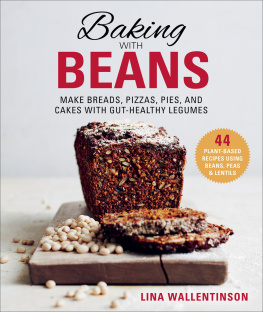



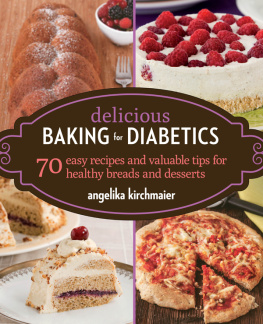
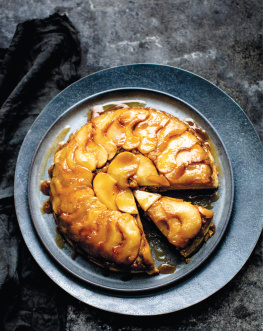
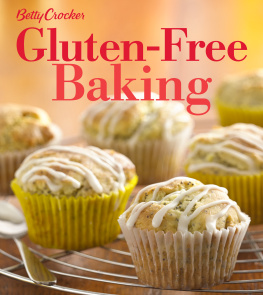
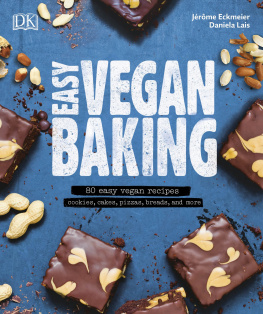

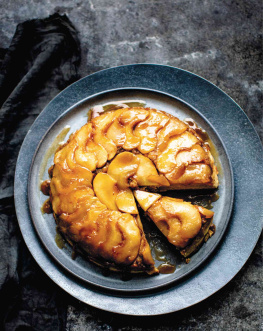
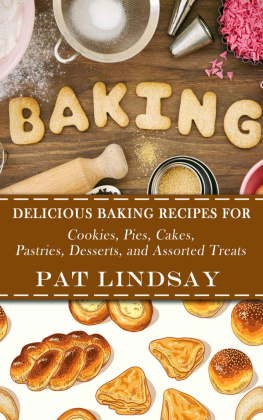




 CONTENTS To trick a child or why I started baking with beans It started with a five-year-old who loved homemade bread but was suspicious of beans. That became the inspiration for this book. Olle, who is now six years old, has always been suspicious of vegetables, especially beans, peas, and lentils; sandwiches made with homemade bread on the other hand, now thats a different story. As editor of Buffet magazine, I remember we once featured a bread with chickpeas in the dough. I found the recipe, tried it, and surprisingly Olle happily munched away at his sandwich with no idea of what it was hiding. I got a taste for this style of baking and started to experiment.
CONTENTS To trick a child or why I started baking with beans It started with a five-year-old who loved homemade bread but was suspicious of beans. That became the inspiration for this book. Olle, who is now six years old, has always been suspicious of vegetables, especially beans, peas, and lentils; sandwiches made with homemade bread on the other hand, now thats a different story. As editor of Buffet magazine, I remember we once featured a bread with chickpeas in the dough. I found the recipe, tried it, and surprisingly Olle happily munched away at his sandwich with no idea of what it was hiding. I got a taste for this style of baking and started to experiment. PS However hard I try I struggle to embrace the word legumes. Beans, peas, and lentils sound so much tastier! Sometimes when I am writing generally about legumes I might just say beans, but remember to include peas and lentils too.
PS However hard I try I struggle to embrace the word legumes. Beans, peas, and lentils sound so much tastier! Sometimes when I am writing generally about legumes I might just say beans, but remember to include peas and lentils too. MORE BEANS IN YOUR BREAD Give your health a leg up by baking with beans. Smuggle some peas into your bread rolls, spice up your crispbread, and make bars with lentils. Beans in your dough make it moist and soaked lentils give cookies, granola, and piecrust a nice crunch.
MORE BEANS IN YOUR BREAD Give your health a leg up by baking with beans. Smuggle some peas into your bread rolls, spice up your crispbread, and make bars with lentils. Beans in your dough make it moist and soaked lentils give cookies, granola, and piecrust a nice crunch.  Why bake with beans? Bread is something most of us eat every day.
Why bake with beans? Bread is something most of us eat every day. We need five handfuls, or around a pound of fruit and vegetables a day if you follow official guidelines.
We need five handfuls, or around a pound of fruit and vegetables a day if you follow official guidelines. Dont forget you are also being kind to the environment cooking one large batch rather than lots of small ones. It only works if you have space in the freezer of course, or plan to make lots of different meals at once such as bean soup, stews, hummus, etc. All around the world there are several examples of how to bake using beans, peas, and lentils, mainly using flour made from legumes.
Dont forget you are also being kind to the environment cooking one large batch rather than lots of small ones. It only works if you have space in the freezer of course, or plan to make lots of different meals at once such as bean soup, stews, hummus, etc. All around the world there are several examples of how to bake using beans, peas, and lentils, mainly using flour made from legumes. How to bake with beans Soft breads Cooked beans, peas, and lentils work best when making bread dough. More accurately you mix them with water or another liquid, which is then added to the rest of the ingredients for the dough. I often add any yeast that is needed into the smooth bean paste and then quickly mix it again so that the yeast dissolves.
How to bake with beans Soft breads Cooked beans, peas, and lentils work best when making bread dough. More accurately you mix them with water or another liquid, which is then added to the rest of the ingredients for the dough. I often add any yeast that is needed into the smooth bean paste and then quickly mix it again so that the yeast dissolves.